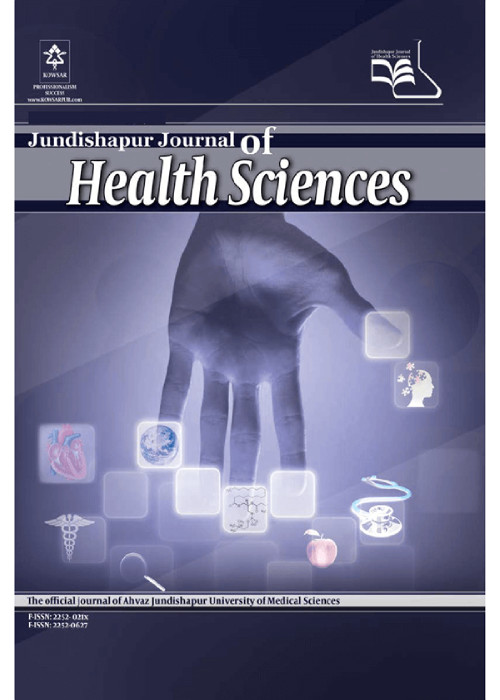Evaluating the Efficiency of Salicornia, Typha, and Juncus Aquatic Plants in Extra Phosphate Phytoremediation from the Aqueous Solutions
Author(s):
Article Type:
Research/Original Article (دارای رتبه معتبر)
Abstract:
Background
The phosphorous as one of the agricultural, industrial, and urban pollutants has an important role in the eutrophication phenomenon of the surface waters.
Objectives
In this research, the effect of three species of aquatic plants, including Salicornia (Persica), Typha, and Juncus, were investigated and compared with the potential of phosphate uptake.
Methods
After preparing the condition and cultivation of plants, they were irrigated by synthetic wastewaters with various phosphate concentrations (7, 18, and 28 mg. L-1) for 28 days. In this test, the adsorbed phosphate was calculated based on mg. g-1 of the plant dry tissues weight using two methods mass balance and wet digestion methods.
Results
The results showed that increase in the pollutants concentration and passing time had a significant effect on the accumulative increase in phosphate uptake in all three plants at 5% level. Thus, the maximum adsorption capacity was obtained on the 28th day in high concentration of pollutant which was measured for Salicornia, Juncus, and Typha as 9.68, 6.37, and 7.68 mg. g-1 of plant dry tissues weight, respectively. Also based on the reported regression coefficients values and the obtained equations, it can be concluded that the variable ‘time' was more effective than the ‘concentration' variable in terms of adsorbed phosphate by the studied plants. The results of the measurement of phosphate uptake in the terrestrial and aerial parts showed that the maximum uptake was measured as 6.35 and 10.33 mg. g-1 of terrestrial and aerial parts dry weight in Salicornia plant, respectively. Moreover, the results showed that the translocation factor in Salicornia, Juncus, and Typha plants were 1.54, 1.12, and 1.46, respectively, as Salicoenia was maximum and Juncus was minimum.
Conclusions
Finally, according to the obtained results from research, all three plants can be known as the hyper-accumulate plants, and they can be used for phytoremediation of phosphate from the agricultural soils according to the high capacity of these plants and prevent these pollutants from entering to the surface waters.Keywords:
Language:
English
Published:
Jundishapur Journal of Health Sciences, Volume:11 Issue: 1, Jan 2019
Page:
1
magiran.com/p1932914
دانلود و مطالعه متن این مقاله با یکی از روشهای زیر امکان پذیر است:
اشتراک شخصی
با عضویت و پرداخت آنلاین حق اشتراک یکساله به مبلغ 1,390,000ريال میتوانید 70 عنوان مطلب دانلود کنید!
اشتراک سازمانی
به کتابخانه دانشگاه یا محل کار خود پیشنهاد کنید تا اشتراک سازمانی این پایگاه را برای دسترسی نامحدود همه کاربران به متن مطالب تهیه نمایند!
توجه!
- حق عضویت دریافتی صرف حمایت از نشریات عضو و نگهداری، تکمیل و توسعه مگیران میشود.
- پرداخت حق اشتراک و دانلود مقالات اجازه بازنشر آن در سایر رسانههای چاپی و دیجیتال را به کاربر نمیدهد.
دسترسی سراسری کاربران دانشگاه پیام نور!
اعضای هیئت علمی و دانشجویان دانشگاه پیام نور در سراسر کشور، در صورت ثبت نام با ایمیل دانشگاهی، تا پایان فروردین ماه 1403 به مقالات سایت دسترسی خواهند داشت!
In order to view content subscription is required
Personal subscription
Subscribe magiran.com for 70 € euros via PayPal and download 70 articles during a year.
Organization subscription
Please contact us to subscribe your university or library for unlimited access!


